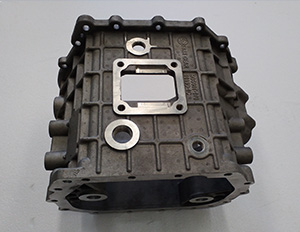Sand casting, as the name suggests, uses the sand mold as the basic mold, and the metal solution is poured to form the desired casting. At present, iron, steel and many non-ferrous metals can be obtained by this method. Its advantages are: low material prices, easy access, adaptability, and a wide range of applications, whether it is single or large-scale production.
Metal casting, also known as die casting. Unlike sand casting, which uses a metal mold, the mold can be reused hundreds of times. However, it has certain limitations, such as casting weight, shape and thickness.
The following are the specific advantages and disadvantages of metal casting and sand casting.
1. Advantages:
(1) Castings produced by metal type have higher mechanical properties than sand castings. The same alloy, the tensile strength can be increased by 25% on average, the yield strength is increased by about 20% on average, and the corrosion resistance and hardness are also significantly improved;
(2) The precision and surface finish of the casting are higher than that of the sand casting, and the quality and size are stable;
(3) The process yield of the casting is high, and the liquid metal consumption is reduced, generally saving 15 to 30%;
(4) No sand or less sand is used, generally 80-100% of the molding material can be saved; in addition, the production efficiency of the metal casting is high; the cause of the defects of the casting is reduced; the process is simple, and the mechanization and automation are easily realized.
2. Disadvantages:
(1) Metal type manufacturing cost is high;
(2) The metal type is airtight and has no retreat, which may cause defects such as insufficient washing of the casting, cracking or white cast iron parts;
(3) During metal casting, the working temperature of the mold, the casting temperature and casting speed of the alloy, the time the casting stays in the mold, and the coating used are sensitive to the quality of the casting and require strict control. .
Therefore, when deciding to use metal casting, the following factors must be considered: the shape and weight of the casting must be appropriate; there must be sufficient batch size; the deadline for completing the production task is permitted.



